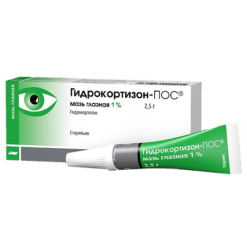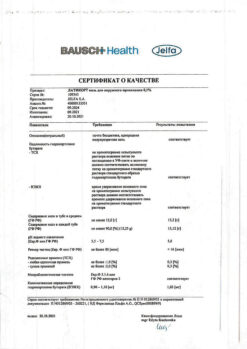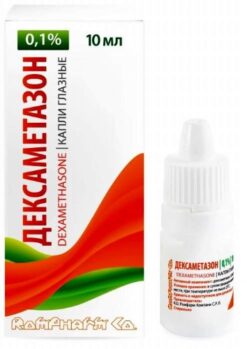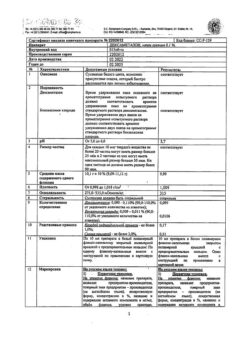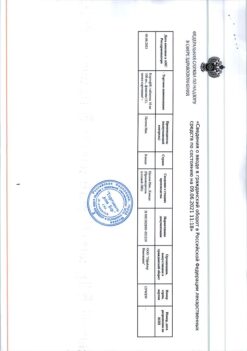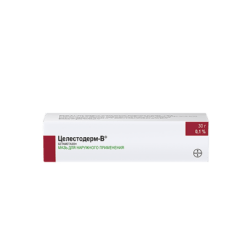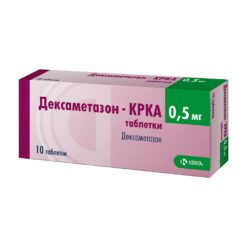No products in the cart.
Veldexal, 25 mg/ml 2 ml 5 pcs
€6.31 €5.52
Description
Pharmacotherapeutic group: Non-steroidal anti-inflammatory drug (NSAID).
The ATX code: [M01AE17]
Pharmacological properties
Pharmacodynamics
Dexketoprofen trometamol refers to non-steroidal anti-inflammatory drugs (NSAIDs), a propionic acid derivative. It has analgesic, anti-inflammatory and antipyretic effects. The mechanism of action is related to the inhibition of prostaglandin synthesis at the level of cyclooxygenase-1 and cyclooxygenase-2.
Analgesic effect comes 30 min after parenteral administration. Duration of analgesic effect after administration of 50 mg is 4-8 hours.
In combined therapy with opioid analgesics dexketoprofen significantly (up to 30-45%) reduces the need for opioids.
Pharmacokinetics
After intramuscular (i/m) administration of dexketoprofen the maximum concentration (Cmax) in blood serum is reached in average 20 min (10-45 min). The area under the curve “concentration-time” (AUC) after a single administration at a dose of 25-50 mg is proportional to the dose, both when administered v/m and intravenous (IV). The corresponding pharmacokinetic parameters are similar after single and repeated v/m or v/v administration, indicating that there is no cumulation of the drug.
Distribution
Dexketoprofen is characterized by high level of binding to plasma proteins (99%). Mean Vd value is less than 0.25 l/kg, the half-distribution time is about 0.35 h. Excretion
The metabolism of dexketoprofen mainly occurs by conjugation with glucuronic acid with subsequent excretion by the kidneys. The elimination half-life (T1/2) of dexketoprofen trometamol is about 1-2.7 h.
Pharmacokinetics in elderly persons
In elderly persons there is an increase in the T1/2 period (both after a single injection and after repeated intravenous or intravenous administration) of up to 48% on average and a decrease in the total clearance of the drug.
Indications
Indications
– management of pain syndrome of different genesis (including. Postoperative pain, pain with bone metastases, post-traumatic pain, pain with renal colic, algodysmenorrhea, sciatica, radiculitis, neuralgia, toothache).including rheumatoid arthritis, osteoarthritis, spondyloarthritis: ankylosing spondylitis, reactive arthritis, psoriatic arthritis.)
The drug is intended for symptomatic therapy, to reduce pain and inflammation at the time of use, does not affect the progression of the disease.
Active ingredient
Active ingredient
Dexectoprofen
How to take, the dosage
How to take, the dosage
Intravenously (slowly at least 15 seconds) and intramuscularly (injected deeply, slowly). Recommended dose for adults: 50 mg every 8-12 hours. If necessary, the drug may be administered again at 6-hour intervals. Maximum daily dose is 150 mg.
Dexetoprofen is indicated for short-term use (not more than 2 days) during acute pain syndrome.
Hepatic impairment
In patients with mild to moderate hepatic impairment (5-9 points by Child-Pugh score) the total daily dose should be reduced to 50 mg and frequent monitoring of liver function parameters should be performed. Dexetoprofen should not be administered to patients with severe hepatic impairment.
For patients with mild renal dysfunction (creatinine clearance 30-60 ml/min) the daily dose should be reduced to 50 mg. Dexetoprofen should not be administered to patients with moderate to severe renal impairment (creatinine clearance less than 30 ml/min).
Patients in the elderly
Dose adjustment for elderly patients is usually not necessary; however, because of the physiologic decrease in renal function, a lower dose of the drug is recommended: a total daily dose of 50 mg for mild renal impairment in elderly patients.
Preparation of solutions
For preparation of the drug solution for intravenous infusion the content of one ampoule (2 ml) is diluted in 30-100 ml of 0.9% sodium chloride solution, glucose solution or Ringer’s solution. The solution should be prepared under aseptic conditions, protected from exposure to daylight. The diluted solution should be clear and colorless, administered by slow intravenous infusion lasting 10-30 minutes.
Special Instructions
Special Instructions
In persons with symptoms of gastrointestinal disorders or with a history of gastrointestinal diseases, medical supervision is required, especially in case of gastrointestinal bleeding. In cases of gastrointestinal bleeding in patients taking dexketoprofen, the drug should be stopped immediately.
The drug should be used with caution in patients concomitantly taking drugs which may increase the risk of ulceration or bleeding: corticosteroids, anticoagulants (e.g., warfarin), selective serotonin reuptake inhibitors or antiaggregants (including acetylsalicylic acid).
Dexketoprofen may cause reversible inhibition of platelet aggregation and increase bleeding time.
Dexketoprofen should be used with caution in patients with a history of allergies. Dexketoprofen should be used with caution in patients with chronic heart failure NYHA functional class I-II.
Dexketoprofen may cause increase in creatinine and plasma nitrogen levels, have adverse effects on the urinary system, leading to development of glomerulonephritis, interstitial nephritis, papillary necrosis, nephrotic syndrome, and acute renal failure.
As with the use of other NSAIDs, a slight transient increase in some liver function tests, a significant increase in serum ACT and ALT activity is possible. In this case, monitoring of liver and kidney functions is necessary in elderly patients. In case of significant increase of the corresponding indicators Dexketoprofen should be discontinued.
Dexketoprofen should be used with caution in patients with hematopoiesis disorders, patients with systemic lupus erythematosus or other connective tissue diseases.
Like other NSAIDs, dexketoprofen may mask the symptoms of infectious diseases. Single cases of exacerbation of infections localized in the soft tissues have been reported when using NSAIDs. Therefore, medical monitoring of patients with signs of bacterial infection or worsening of the condition during dexectoprofen treatment is required.
Caution should be exercised when prescribing the drug in patients with impaired liver, renal, cardiac function or with conditions that may cause fluid retention in the body. In these patients, the use of NSAIDs may lead to a worsening of the condition and fluid retention in the body. Caution should also be exercised when prescribing dexketoprofen to patients who use diuretics or are prone to hypovolemia, because they have an increased risk of nephrotoxicity.
Perhaps caution is required when prescribing in the elderly as they are more likely to have renal, hepatic or cardiovascular dysfunction and to have adverse reactions such as gastrointestinal bleeding or perforated bowel.
Each vial contains 200 mg of ethanol.
Impact on driving, operating machinery
According to possible dizziness and somnolence during the use of the drug, the ability to concentrate and the speed of psychomotor reactions may be reduced.
Contraindications
Contraindications
– hypersensitivity to dexketoprofen, as well as to other NSAIDs or to any of the excipients included in the preparation;
– complete or incomplete combination of bronchial asthma, recurrent polyposis of the nose and sinuses and intolerance to acetylsalicylic acid or other NSAIDs (including anamnesis);
– erosive-ulcerative lesions of the gastrointestinal tract and duodenum;
– gastrointestinal bleeding in the history, other active bleeding (including a history.ч. suspected intracranial bleeding), anticoagulant therapy;
– inflammatory bowel disease (ulcerative colitis, Crohn’s disease) in the acute stage;
– severe liver function disorders (10-15 points by Child-Pugh score);
– progressive renal disease, severe renal function disorders (creatinine clearance less than 30 ml/min);
– confirmed hyperkalemia;
– decompensated heart failure;
– period after coronary artery bypass grafting;
– hemophilia and other blood clotting disorders;
– pregnancy, breastfeeding period;
– under 18 years of age (effectiveness and safety not established).
The drug is contraindicated for neuroaxial (epidural or submandibular, intracochlear) administration because of the ethanol in the drug.
With caution
Gastric and duodenal ulcer, ulcerative colitis, Crohn’s disease, liver diseases in anamnesis, hepatic porphyria, chronic renal insufficiency (creatinine clearance 30-60 ml/min), chronic heart failure, arterial hypertension, significant decrease of circulating blood volume (including after surgical intervention), elderly patients (over 65 years of age, including those receiving diuretics, including those who receive diuretics).over 65 years of age (including those treated with diuretics, frail patients and those with low body weight), bronchial asthma, concomitant use of glucocorticosteroids (including Prednisolone), anticoagulants (including warfarin), antiplatelet agents (including acetylsalicylic acid, clopidogrel), selective serotonin reuptake inhibitors (including citalopram citalopram, fluoxetine, paroxetine, sertraline), coronary heart disease, cerebrovascular disease, dielipidemia/hyperlipidemia, diabetes, peripheral artery disease, smoking, Helicobacter pylori infection, systemic connective tissue disease, long-term use of non-steroidal anti-inflammatory drugs, tuberculosis, significant osteoporosis, alcoholism, severe medical conditions.
Side effects
Side effects
The frequency of adverse reactions that were observed during the above clinical trials is presented according to the WHO classification: Very common ≥10%; common ≥1% and < 10%; infrequent ≥0.1% and < 1%; rare ≥0.01% and
< 0.1%; very rare < 0.01%; frequency unknown – the frequency of an adverse reaction cannot be determined from the available data.
Local reactions
Often – pain at the injection site; infrequent – inflammatory reaction, hematoma, hemorrhages at the injection site, fever, chills, fatigue; rare – back pain, fainting, fever; very rare – anaphylactic shock, facial edema.
Central nervous system disorders
Infrequent – headache, dizziness, insomnia, somnolence; rarely – paresthesia.
Skin disorders
Infrequent dermatitis, rash, sweating; rare acne, urticaria; very rare – severe skin reactions (Stevens-Johnson syndrome, Lyell syndrome), angioedema, allergic dermatitis, photosensitization.
Urinary system disorders
Seldom – polyuria, renal colic; very rarely – nephritis or nephrotic syndrome.
Metabolic disorders
Rarely: hyperglycemia, hypoglycemia, hypertriglyceridemia.
Musculoskeletal system disorders
Rarely: muscle spasm, difficulty in movement in the joints.
Digestive system disorders
Often – nausea, vomiting; infrequent – abdominal pain, dyspepsia, diarrhea, constipation, hematemesis, dry mouth; infrequent – erosive-ulcerative lesions of the gastrointestinal tract (GIT), including bleeding and perforations, anorexia, increased liver enzymes activity, jaundice; very rare – pancreatic lesions, liver damage.
Hematopoietic organs
Seldom anemia; very rarely neutropenia, thrombocytopenia.
Respiratory system disorders
Rarely – bradypnoea; very rarely – bronchospasm, dyspnoea.
Sensory system disorders
Infrequent – blurred vision; rarely – tinnitus.
Cardiovascular system disorders
Infrequent – arterial hypotension, fever, skin hyperemia; rare – extrasystole, tachycardia, arterial hypertension, peripheral edema, superficial thrombophlebitis.
Rarely – in women – menstrual disorders, in men – disorders of prostate function.
Laboratory indices
Rarely – ketonuria, proteinuria.
Other
Aseptic meningitis, occurring mainly in patients with systemic lupus erythematosus or mixed connective tissue diseases, hematological disorders (purpura, aplastic and hemolytic anemia, rarely – agranulocytosis and bone marrow hypoplasia).
Overdose
Overdose
No cases of overdose have been described.
Symptoms: possible vomiting, nausea, anorexia, abdominal pain, dizziness, disorientation, headache, somnolence.
Treatment: symptomatic therapy; if necessary – hemodialysis.
Pregnancy use
Pregnancy use
The use of the drug is contraindicated in pregnancy and during breast-feeding.
Similarities
Similarities
Dexalgin 25, Dexalgin, Flamadex, Ketodexal, Dexonal, Dexectoprofen
Additional information
| Weight | 0.032 kg |
|---|---|
| Shelf life | 2 years. Do not use after the expiration date. |
| Conditions of storage | In the dark place at a temperature not exceeding 25 oC. Keep out of the reach of children. |
| Manufacturer | Welfarm, Russia |
| Medication form | solution |
| Brand | Welfarm |
Related products
Buy Veldexal, 25 mg/ml 2 ml 5 pcs with delivery to USA, UK, Europe and over 120 other countries.


